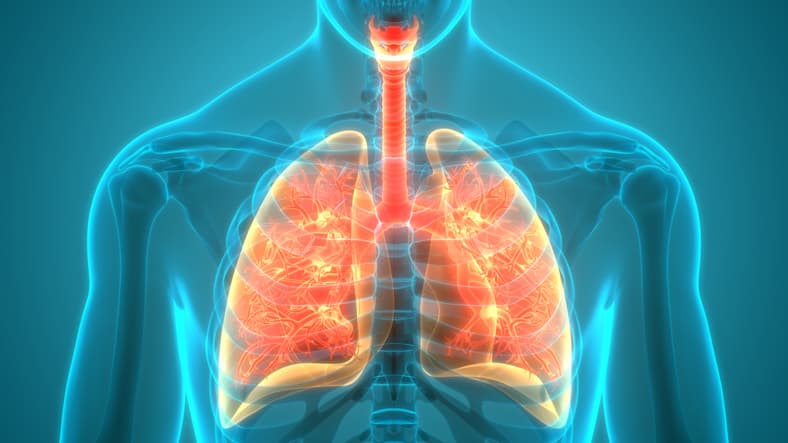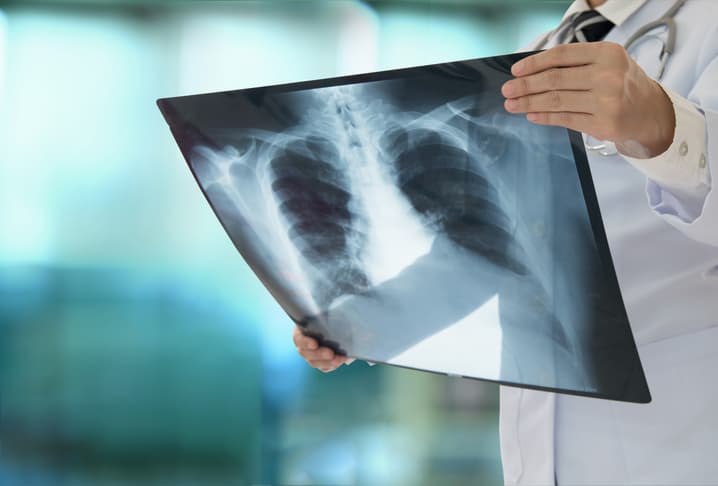Lung cancer rarely presents symptoms until the later stages of the disease. Unfortunately, by the time symptoms develop, most people are already in the later stages of cancer, making treatment and survival more challenging.
According to the National Cancer Institute, lung cancer is the third most common type of cancer. For 2022, it is estimated there will be almost 237,000 new cases with just over 130,000 deaths from lung cancer. Furthermore, lung cancer is the leading cause of cancer deaths in both men and women.
Are you at risk of lung cancer? Schedule a lung cancer screening at Preventative Diagnostic Center in Las Vegas today.
What is lung cancer?
Lung cancer is a type of cancer that forms in the lungs when damaged or abnormal cells continue to grow and divide when they should not. The cancer cells often form tumors in the lungs that can spread to different areas of the lungs.
As the cancer grows, the abnormal cells multiply and overcome normal cells. Normal, healthy cells near the cancer stop reproducing and allow the cancerous cells to take over.
As the cancer cells spread, they will progress through different stages. Each stage is based on the size of the growth and how far it has spread through the lungs. Cancer will progress from stage 1 to stage 4 if left unchecked and untreated.
At stage 1, the cancer is contained in a specific area in the lungs. At stage 2, tumors start to form, and the cancer has not spread to new areas. However, once lung cancer reaches stage 3, it will have spread to surrounding cells and possibly into the lymph nodes.
Stage 4 lung cancer is the most serious and life-threatening. At this stage, the cancer has spread to other parts of the body, such as the breasts or liver.
Who should be screened for lung cancer?
The U.S. Preventive Services Task Force (USPSTF) guidelines recommend annual lung cancer screenings for people that meet the following criteria:
- Adults who currently smoke or those that have stopped smoking within the past 15 years;
AND
- Are between the ages of 50 and 80 years old;
AND
- Have a 20-year pack-year smoking history.
The pack-year is based on the number of packs smoked daily, multiplied by the number of years a person smoked. Suppose a person smokes two packs a day for ten years. Then their pack-year smoking history would be 20 years.
Other people who should be screened for lung cancer include:
- People who do not smoke but live with a smoker. There is evidence and research that supports secondhand smoke causes lung cancer. According to the CDC, more than 7,300 nonsmokers die of lung cancer annually. So, if you are 50 or older and live with a smoker, or one that quit in the past 15 years, you should get annual screenings.
- People with a previous history of lung cancer. If you were previously treated and recovered from lung cancer, there is always a risk it could return. Annual screenings are highly recommended to monitor your lungs and ensure they remain healthy.
- People who are exposed to asbestos regularly. Asbestos is a known carcinogen and cause of lung cancer. It can take between ten and 40 years before any symptoms could appear. Therefore, regular screenings can help identify asbestos-related lung conditions before they worsen.
- People with a family history of lung cancer and respiratory diseases. The risks of developing lung cancer increase when there is a family history. Furthermore, a family history of respiratory diseases, such as COPD (chronic obstructive pulmonary disease), can increase the risks of lung cancer.
How do you screen for lung cancer?
A low-dose CT scan is the most effective way to screen for lung cancer. Early detection of lung cancer from low-dose CT lung cancer screenings can help improve survival rates.
What is a CT scan?
A CT scan, or Computed Tomography scan, uses advanced technologies to take detailed x-rays of cross-sections of the inside of the body. CT scans can be used on just about any area of the body, including the lungs, heart, kidneys, liver, etc.
What is the difference between a CT scan and a low-dose CT scan?
Both CT scans and low-dose CT scans take detailed images using advanced x-ray technologies. The primary difference between the two is that low-dose CT scans expose people to a fraction of the radiation compared to standard CT scans. As such, it is completely safe for people to get annual low-dose chest CT scans to screen for lung cancer.
How long does a low-dose CT scan take?
Since there are no dyes to drink, medications to take, shorts, or fasting required with low-dose CT lung scans, the process is relatively brief. The entire CT lung cancer screening process, from preparing you for the scan to the time it is completed, is about 15 minutes.
Surprisingly, the actual scan time is approximately a mere ten seconds. You take a deep breath and hold it for ten seconds, and the scan is complete. Your scan is reviewed by a board-certified radiologist, who also provides a comprehensive report of their findings.
Detect Lung Cancer Before It Is Too Late
When you are at risk of developing lung cancer, annual screenings determine the health of your lungs. They provide an accurate assessment of the detection of lung cancer in its earliest stages, therefore increasing survival rates. Schedule your low-dose CT scan in Las Vegas by contacting us today.
Are you a past or current smoker? Do you live with a smoker? Determine your lung health by booking a low-dose CT scan that screens for lung cancer.
Sources:
Cancer State Facts: Lung and Bronchus Cancer. (2021).
Health Effects of Secondhand Smoke. (2020).
Lung Cancer: Screening. (2021).
Stages of Cancer. (2020).


